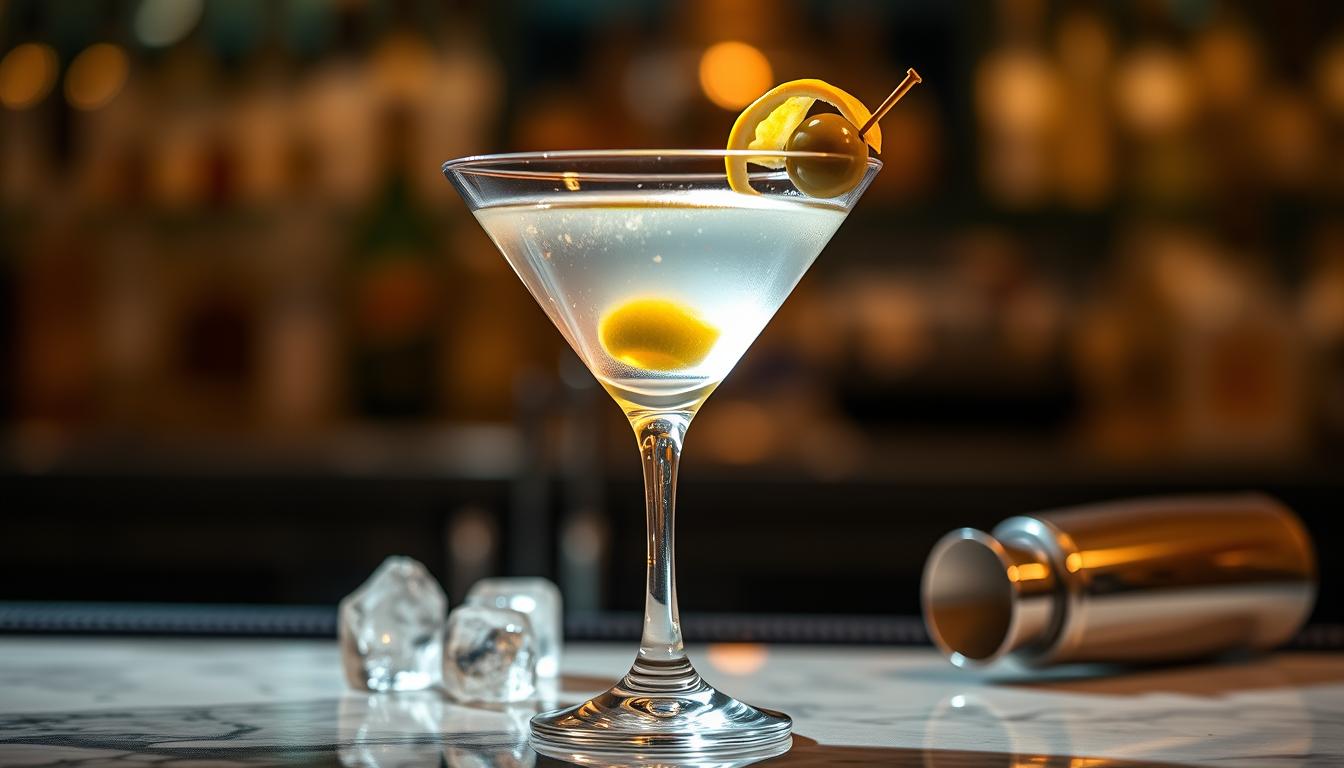The martini has long been hailed as the epitome of sophisticated cocktail culture. This iconic drink, with its perfect balance of gin and vermouth, has captivated the imaginations of bartenders, mixologists, and discerning imbibers alike. From its origins in the late 19th century American bars to its enduring association with the suave and debonair, the martini has cemented its place as a timeless classic.
Whether you prefer your martini shaken, stirred, or a perfect blend of the two, mastering the art of this celebrated libation is a true mark of bartending prowess. In the following sections, we’ll delve into the rich history and evolution of the martini, explore the essential ingredients and preparation techniques, and discover the versatility of this beloved cocktail through its many variations and garnish options.
The History and Evolution of the Iconic Martini
The martini has a rich and captivating history, tracing its roots back to the late 19th century in American bars. This classic cocktail has evolved significantly over the years, transitioning from the original “wet” martini to the iconic “dry” version that has become a staple in popular culture.
Origins of the Martini in American Bars
The martini’s origins are a subject of debate, but most historians agree that the drink emerged in American saloons and speakeasies during the late 1800s. The early martini recipes often included a generous amount of vermouth, resulting in a more “wet” and herbal-flavored cocktail.
From Wet to Dry: Changes Through the Years
As the 20th century progressed, drinkers began to prefer a drier style of martini, with less vermouth and a more prominent gin flavor. This shift towards a “dry” martini was driven in part by the growing popularity of gin and the desire for a crisper, more refined drinking experience.
Famous Martini Drinkers and Cultural Impact
The martini has become a cultural icon, with notable figures like Ernest Hemingway and James Bond helping to cement its status as a sophisticated and glamorous cocktail. The drink’s association with power, wealth, and elegance has made it a fixture in film, literature, and high-society gatherings, solidifying its place in the annals of cocktail history.
| Famous Martini Drinkers | Preferred Martini Style |
|---|---|
| Ernest Hemingway | Dry Martini |
| James Bond | Dry Martini, Shaken Not Stirred |
| Frank Sinatra | Dry Martini |
| Humphrey Bogart | Dry Martini |
Essential Ingredients for a Classic Martini Recipe
At the heart of a timeless martini lies a carefully curated selection of ingredients. To craft the perfect classic martini, the key components are high-quality gin and vermouth, along with a few optional elements that can elevate the drink’s flavor profile and presentation.
The foundation of a martini is the gin. Iconic gin brands such as Tanqueray, Bombay, and Hendrick’s are renowned for their suitability in martini recipes, offering a balanced blend of botanicals that complement the vermouth. When it comes to vermouth, the classic choice is a dry style like Noilly Prat or Dolin, which provides a subtle sweetness to balance the spirit’s juniper-forward notes.
While the gin and vermouth are the essential building blocks, some bartenders may choose to add a dash of bitters or a lemon twist to heighten the martini’s aroma and complexity. These optional ingredients can contribute a delightful aromatic and citrus-forward accent to the drink.
The garnish selected for a martini can also play a crucial role in the overall presentation and flavor experience. Classically, a green olive or a lemon twist are the most common and popular choices, each offering a distinct flavor and visual impact.
| Ingredient | Recommended Brands |
|---|---|
| Gin | Tanqueray, Bombay, Hendrick’s |
| Vermouth | Noilly Prat, Dolin |
| Garnish | Green Olive, Lemon Twist |
| Optional | Bitters |
By carefully selecting the right ingredients and mastering the art of mixing, you can create a classic martini that pays homage to the drink’s rich history and timeless appeal.
Step-by-Step Mixing Instructions
Crafting the perfect martini requires precision and attention to detail. From preparing your bar tools to mastering the art of mixing, each step plays a crucial role in creating a chilled, well-balanced cocktail. Let’s dive into the step-by-step instructions for mixing a classic martini.
Preparing Your Bar Tools
Gather your essential bar tools, including a mixing glass, a long-handled bar spoon, and a jigger for measuring the ingredients. Ensure your tools are clean and dry to maintain the purity of the martini’s flavors.
Proper Mixing Technique
The debate between shaking and stirring a martini is a topic of much discussion among cocktail enthusiasts. Both techniques have their merits, but the preferred method often comes down to personal preference and the specific ingredients used. For a classic martini, many prefer the gentle stirring method, which helps preserve the drink’s clarity and texture without over-diluting the spirit.
- Fill your mixing glass with ice cubes.
- Add the desired amount of gin or vodka, depending on your preference.
- Carefully stir the mixture using your bar spoon, making sure to incorporate the ingredients thoroughly.
- Strain the chilled cocktail into a pre-chilled martini glass.
Chilling and Serving Methods
The final step in creating a truly exceptional martini is ensuring the glass is perfectly chilled. Chill your martini glass by placing it in the freezer or filling it with ice water while you prepare the cocktail. This simple step helps maintain the drink’s temperature and preserves the subtle flavors and aromas.
Once your martini is mixed and the glass is chilled, it’s time to serve. Consider garnishing the drink with a green olive or a lemon twist to add a touch of elegance and complement the flavors of the martini.
| Bar Tool | Purpose |
|---|---|
| Mixing Glass | To combine the ingredients and allow for proper dilution and chilling |
| Bar Spoon | For gently stirring the cocktail to achieve the desired texture and clarity |
| Jigger | To accurately measure the spirits and ensure a well-balanced martini |
By following these step-by-step instructions and paying close attention to the details, you can create a martini that is chilled to perfection and showcases the nuanced flavors of the gin or vodka. Whether you prefer a classic dry martini or a more contemporary variation, mastering the art of martini preparation is essential for any cocktail enthusiast.
Popular Martini Variations and Garnish Options
Beyond the classic gin martini, bartenders have created a range of delightful variations to suit diverse palates. The dirty martini, for instance, features a splash of olive brine, adding a savory, briny note to the drink. Meanwhile, the vodka martini offers a smoother, more neutral base, allowing the garnish to take center stage.
When it comes to garnishes, the options are endless. The humble olive garnish is a time-honored classic, while a lemon twist can bring a refreshing citrus aroma to the mix. Bartenders may also experiment with more unique garnishes, such as bleu cheese-stuffed olives or a flamed orange peel, to create truly distinctive martini experiences.
Ultimately, the beauty of the martini lies in its versatility. Whether you prefer a classic gin-based rendition or a modern twist, the right garnish can elevate the drink and unlock a whole new world of flavor profiles. Explore the possibilities, and discover your perfect martini match.

